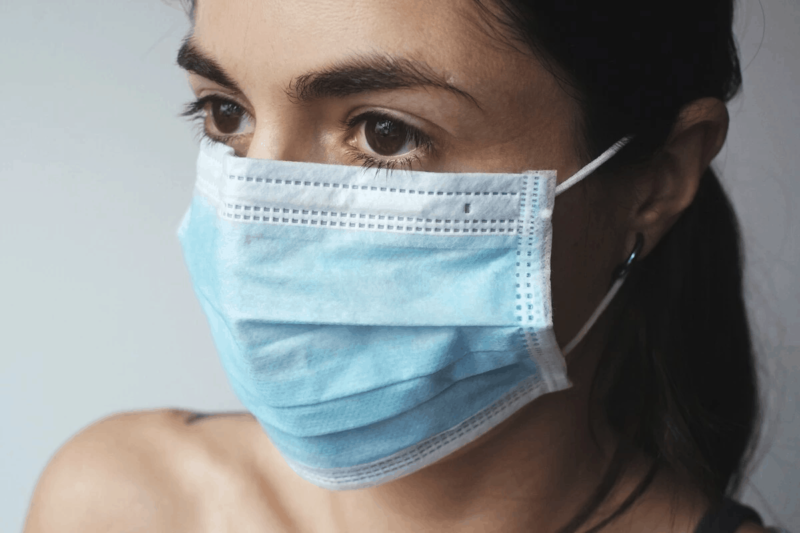You’ve decided to make your own face mask? Fantastic!
By this point, you have probably heard the CDC recommends wearing cloth face masks in public spaces where social distancing is more challenging.
The real question is how to make homemade face masks?
Around the world, we are facing a global pandemic, COVID-19. Practicing social distancing from others can save lives.
But the reality is sometimes you will be around other people and you may need to take additional precautions.
Table of Contents
Let’s talk about face masks.
Here is a quick and easy guide to everything you need to know about how to make face masks!
1. Use Cloth
What do face masks do?
Cloth masks can help slow the spread of COVID-19. They are crucial in helping people who may have the virus but show no symptoms from giving it to others who are more vulnerable. Cloth face masks can be made from a variety of household items.
Some items include:
- Bandanas
- Cotton t-shirts
- Scarves
Remember to wash the fabric before transforming it into a face mask. If possible, avoid washing with fragrance.
Different types of cloth are more effective than others. For the most successful results, try to use a thread count of 180 or more. These tighter and thicker clothes will better filter out the virus.
If you only have thinner fabrics, double up the cloth and use two layers (Flannel works really well).
Do not cut the cloth. Instead, fold it over itself until it fits across the bridge of your nose and along your jaw. Remember the cloth needs to cover both your nose and mouth. These are important actions to take to make the face mask most effective.
Make sure you wash the mask regularly and always use a dry mask.
2. Making The Face Mask (Basic)
Now that you have the base, it’s time to secure the mask to your face. Make sure your face mask is tight so you don’t need to adjust it and touch your face.
Some great materials to use are:
- Rope elastics
- Beading cord elastics
- Rubber bands
Simply secure the elastic of your choice over the right and left sides of the cloth about two inches inside the fabric’s outer edge. You should see three panels on the cloth divide by two elastics.
Place the cloth over your face and extend the elastic with your fingers. Gently place the stretched elastic over your ears.
And voilà! You have a homemade face mask.
3. Making The Face Mask (Advanced)
Up for a challenge? Give this DIY advanced face mask a try!
You will need:
- Quilting cotton (two pieces)
- Fabric strips (four strips)
- Needle
- Thread
Use two sections of the quilting cotton nine inches wide and six inches long. Cut strands of fabric two inches wide and sixteen inches long.
- Put your quilting cotton layers on top of each other
- Place the four fabric strips at each corner in between the layers
- Assemble three staggered folds lengthwise on the quilting cotton
- Sew around the entire quilting cotton rectangle
This can also be done with a sewing machine if you prefer and have one available to you. Feel free to get creative and use patterned fabrics!
If you can’t get enough of creating face masks, some institutions are seeking homemade cloth face mask donations. It can be a great way to lend a hand and help out others in need.
4. Where To Wear
It can be challenging to decide how often to use face masks. The virus transmits from one person to another when two or more people are in close contact with one another.
COVID-19 is an air-born virus that spreads through things like:
- Coughing
- Speaking
- Sneezing
The CDC recommends wearing a cloth face mask in public areas where it may be difficult to stay six or more feet away from other individuals. If it is not probable to actively practice social distancing, you need a face mask.
Some locations you should wear a face mask at include:
- Grocery stores
- Workplaces
- Travel spaces
Remember face masks are worn to prevent sick people from transmitting the virus to healthy people. It does not necessarily prevent a healthy person from contracting the virus.
It is believed that many undocumented cases that cause the virus to spread so quickly are from people who are asymptomatic. Wearing a cloth face mask may help prevent the spread of COVID-19 from people who may have the virus and are unaware of it.
5. The Benefits
Hospitals all around the world have reported mass shortages in personal protective equipment. (Especially face masks!)
Cloth face masks help reserve surgical masks and specialized N95 masks for the health care professionals treating COVID-19 on the frontlines. They have a higher chance of exposure to the virus and need those masks to stay safe at work.
That way they can stay healthy and keep treating those who need help most!
Using cloth face masks also reduces single-use waste and helps with sustainability. This helps to avoid the depletion of limited face masks in circulation and lends a hand to our environment.
Cloth face masks are also cost-effective. All the materials you need are found right in your home. Not to mention they take less than five minutes to make.
Face Masks
Making face masks is an easy step anyone can take to slow the spread of COVID-19. In addition to wearing face masks, it is also important to:
- Wash hands frequently
- Avoid touching your face
- Cough into your elbow
We’ve got this!
Want to see more posts on how to make face masks? Check out the rest of our blog to learn more!


One thought on “How to Make Your Own Face Masks (Quick and Easy!)”